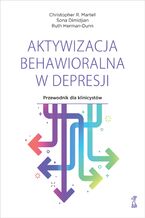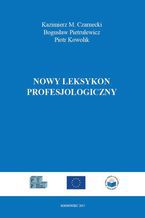
Pięcioczynnikowy model osobowości a profile psychopatii w grupie nieprzęstępczej Jarosław Groth, Lidia Cierpiałkowska


- Autorzy:
- Jarosław Groth, Lidia Cierpiałkowska
- Wydawnictwo:
- Stowarzyszenie Psychologia i Architektura
- Ocena:
- Stron:
- 12
- Dostępny format:
-
PDF
Opis
książki
:
Pięcioczynnikowy model osobowości a profile psychopatii w grupie nieprzęstępczej
The purpose of this paper is to present the results of the pilot research on associations of the factor structure of psychopathy and the dimensions of the five-factor model of personality (FFM). The presented findings are of a preliminary and exploratory nature. They provide a contribution to Polish adaptation of the Psychopathic Personality Inventory Revised (2005). The presented study belongs to the research stream claiming that psychopathy can be described and understood in terms of personality traits from some models of personality. The paper refers to two approaches that allow to compare the results of empirical studies, which are composed of attempts to identify basic personality profiles for psychopathy in terms of the five-factor model. The first one is the assessment of these relationships by experts, the second one the translation of prototypical psychopathy, as measured by the Hare Psychopathic Checklist -Revised, into the language of the five-factor model. The aim of the research was: 1) to investigate the relations between the intensity of psychopathy and the configuration of traits of psychopathy, according to PPI-R, and the profile of factors and dimensions of the five-factor model of personality, as measured by the NEO-Personality Inventory-Revised; 2) to investigate similarities between the profiles of personality and the results of translation of psychopathic traits and of the results of expert description. 85 non-criminals with higher or high school education, 2055 aged, 69.4% man and 30.6% women, were examined.
Wybrane bestsellery
Jarosław Groth, Lidia Cierpiałkowska - pozostałe książki
Stowarzyszenie Psychologia i Architektura - inne książki
Dzięki opcji "Druk na żądanie" do sprzedaży wracają tytuły Grupy Helion, które cieszyły sie dużym zainteresowaniem, a których nakład został wyprzedany.
Dla naszych Czytelników wydrukowaliśmy dodatkową pulę egzemplarzy w technice druku cyfrowego.
Co powinieneś wiedzieć o usłudze "Druk na żądanie":
- usługa obejmuje tylko widoczną poniżej listę tytułów, którą na bieżąco aktualizujemy;
- cena książki może być wyższa od początkowej ceny detalicznej, co jest spowodowane kosztami druku cyfrowego (wyższymi niż koszty tradycyjnego druku offsetowego). Obowiązująca cena jest zawsze podawana na stronie WWW książki;
- zawartość książki wraz z dodatkami (płyta CD, DVD) odpowiada jej pierwotnemu wydaniu i jest w pełni komplementarna;
- usługa nie obejmuje książek w kolorze.
Masz pytanie o konkretny tytuł? Napisz do nas: sklep@ebookpoint.pl
Książka drukowana





































Oceny i opinie klientów: Pięcioczynnikowy model osobowości a profile psychopatii w grupie nieprzęstępczej Jarosław Groth, Lidia Cierpiałkowska
(0)